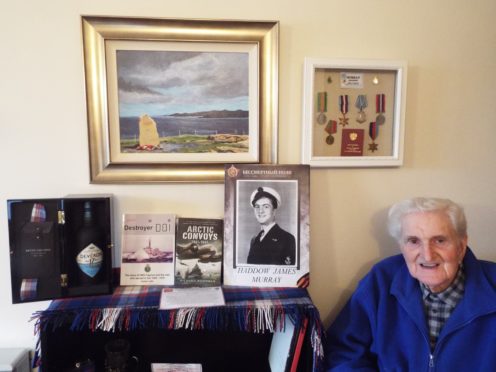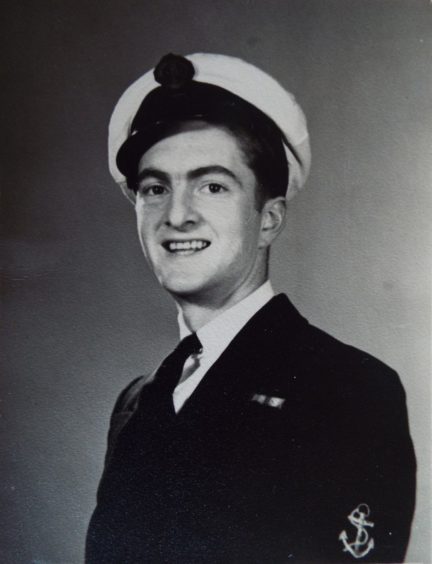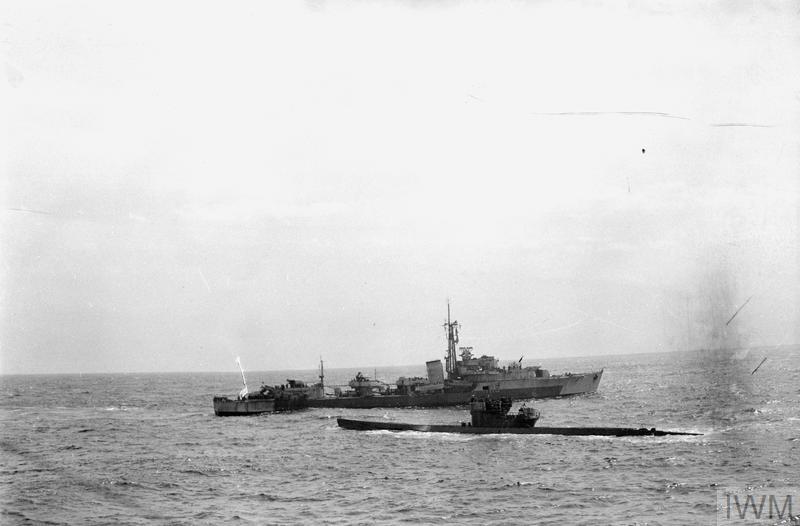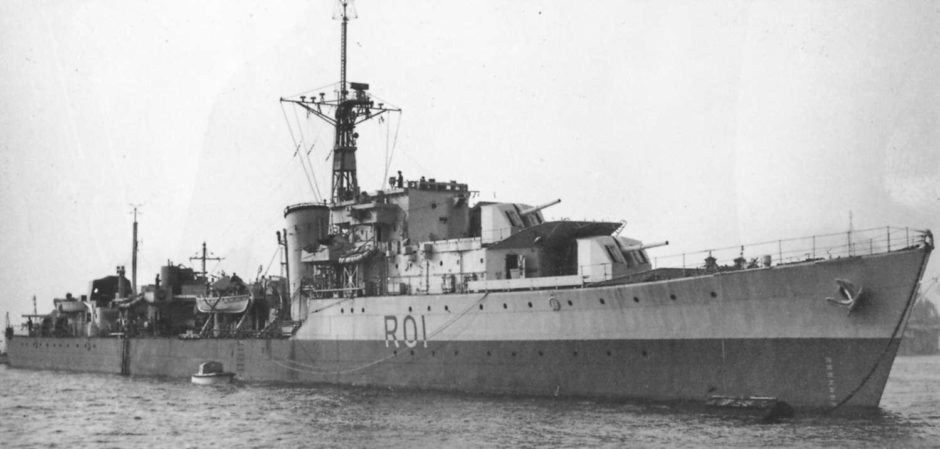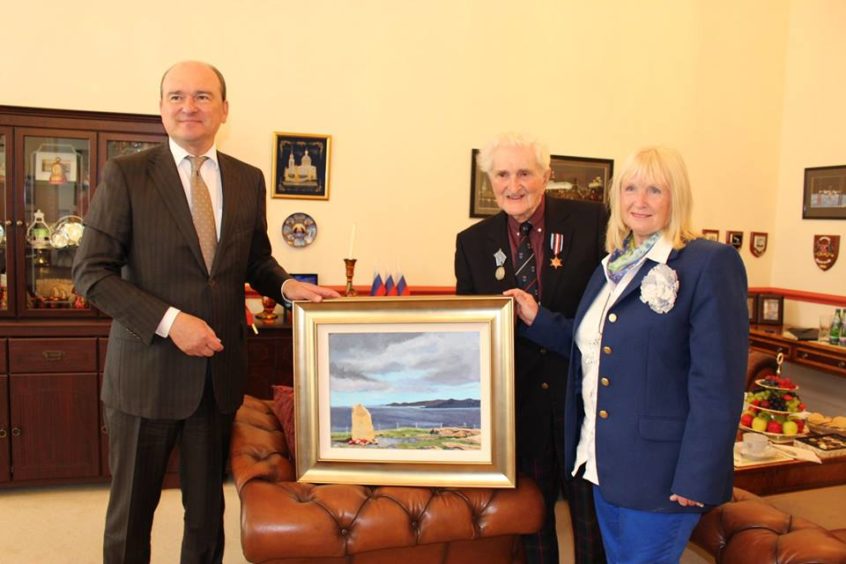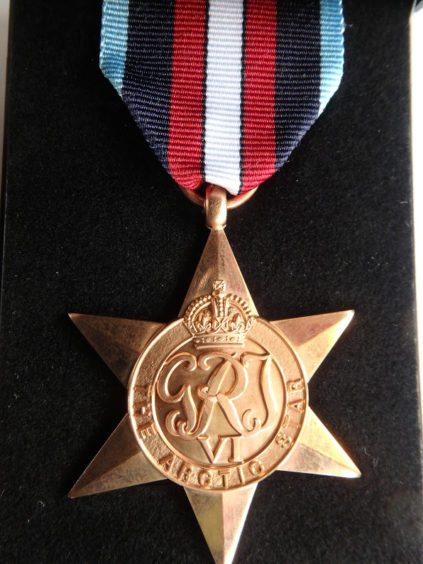Murray Haddow has never forgotten the dangers and devastating loss of life which he witnessed as part of the Arctic Convoys which maintained crucial supply routes to Russia throughout the Second World War.
There was the time when one of his sister ships was torpedoed by a U-boat and the teenager was on deck as the explosion rapidly tore the vessel to pieces.
Drifted to their deaths
He and his colleagues tried to mount a rescue operation, but the sea was unrelenting and Mr Haddow noticed the lights flickering on the stricken men’s life-jackets in the distance as they slowly, inexorably, drifted off to their deaths.
That was just one of many tragedies which befell the convoys during their treacherous journeys from such places as Loch Ewe and Scapa Flow into the Arctic, and then on to Russian ports where they had the task of delivering essential supplies.
The work didn’t stop even on VE Day, while most of the rest of the Allied forces celebrated the cessation of hostilities.
Instead, in May 1945, Mr Haddow and his colleagues found themselves involved in one final encounter with the enemy who had terrorised them for so long.
Overjoyed
He said at his Monifieth home this week: “I vividly remember being on board HMS Caprice – alongside her sister ship HMS Cavendish – in Loch Eriboll in the far north west of Scotland when the German u-boat 516 emerged from the depths to surrender.
“We knew as soon as she had surfaced and we saw the black flag that there would be no more torpedo threats, no more loss of life on the ocean in the war.
“It was a relief, as much as anything else, and although we couldn’t really think about celebrating until we had returned home, we were overjoyed.
“I went on six of these convoys after joining up as an 18-year-old in 1944 and they were grim.
“There was a constant threat of bombardment from above, of submarines from below and that is before you consider the weather conditions, the ice and the fierce winds which affected all our boats.
“It’s strange, though. I don’t recall being frightened when I was on these missions, because I was only a teenager, I was with people I trusted as my friends, and there was a general feeling that we were all in the same boat and we just had to get on with it.
“If anything, I’m probably more scared of Covid-19 these days than I ever was while I was part of the convoys 75 years ago.”
Sailor was in his element
Mr Haddow is a remarkably youthful 94, who lives in a retirement complex in Monifieth.
He joined the Royal Navy in 1944 and despite Winston Churchill describing the Arctic convoy crews as being forced to embark on ‘the most dangerous journey in the world’, the young Scottish sailor was in his element.
He still has evocative memories of taking part in treacherous journeys into the great blue wilderness, but is modest about his achievements, describing himself simply as ‘an accidental hero’, who was fortunate enough to be able to come home, start a family, and grow old with his loved ones.
More than 3,000 British sailors and airmen died between 1941 and 1945 while involved in the convoys, which were a vital – if often unheralded – part of Churchill’s attempts to keep Stalin in the alliance against Hitler.
Honoured by the UK and Russia
Mr Haddow is one of a diminishing number of surviving veterans and has been honoured with the Arctic Star and Ushakov medal for his part in the campaign.
And, just this week, he received another medal, marking the 75th anniversary of the end of the war in Europe, from the Russian government.
In 1999, a monument to the many who lost their lives while they were serving in the convoys was unveiled in Wester Ross.
Mr Haddow commissioned a painting of the sculpture which was subsequently transported to Russia and exhibited at the ‘Museum of the History of the Arctic Convoys 1941-1945’ at St Petersburg’s Admiral Makarov State University.
He said: “The Russians have always been grateful to the men who were on these vessels – there were 1,400 Royal Navy and Merchant Navy ships involved during the war – because they realise that, without us, they would have been overwhelmed and left without any food and supplies.
“I’ve probably learned more about the whole campaign in the last five years than I did in the previous 70.
“I sometimes look back and think how little I really knew what was happening all those years ago because I was so young…but I am very very glad that people like me were able to do our bit.”
